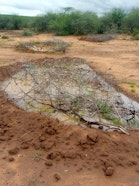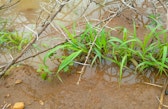Nachhaltige Lösungen für Biodiversität und gegen Wasserknappheit im Ewaso-Ng’iro-Becken
News
Veröffentlichungsdatum: 24. April 2024

Nachhaltige Lösungen für Biodiversität und gegen Wasserknappheit im Ewaso-Ng’iro-Becken
News
Veröffentlichungsdatum: 24. April 2024
Naturbasierte Lösungen (NbS) sind Massnahmen, die dem Schuz, der nachhaltigen Bewirtschaftung und der Wiederherstellung natürlicher und veränderter Ökosysteme dienen. Sie tragen dazu bei, gesellschaftliche Herausforderungen zu bewältigen und gleichzeitig sowohl das menschliche Wohlergehen als auch die Biodiversität zu fördern. Damit NbS im Bereich Biodiversitätsschutz und Wasserressourcenmanagement wirksam sind, müssen sie sowohl den ökologischen als auch den sozioökonomischen Aspekten einer Landschaft Rechnung tragen.
Das Ewaso-Ng’iro-Becken in Kenia ist ein reiches Ökosystem, das den lokalen Gemeinschaften zahlreiche ökologische, soziale und wirtschaftliche Vorteile bietet. Doch Bevölkerungswachstum, Landnutzungswandel, veränderte Konsummuster und andere Faktoren bedrohen sowohl die Ökosysteme als auch die Lebensgrundlagen der Bevölkerung. Der Klimawandel verschärft diese Herausforderungen zusätzlich. Durch den gezielten Einsatz der NbS ergibt sich die Chance, Biodiversität zu schützen und Wasserknappheit zu begegnen.
Ein laufendes Projekt mit halbkreisförmigen Erdwällen in der Naibunga Community Conservancy im Laikipia County ist ein solches Beispiel. Es wurde gemeinsam umgesetzt von der Wyss Academy, JustDiggit und der Community-Gruppe Green Earth Warriors. Ein Jahr nach dem Ausheben der inzwischen 32’000 Erdwälle zeigen erste Monitoring-Ergebnisse Verbesserungen der Vegetationsdecke, vor allem in Bezug auf Gras. Zudem werden alternative Einkommensquellen erprobt.

In 2023, soil sensors were installed to monitor the impact of semi-circular bunds on soil moisture and temperature, and preliminary results show that bunds—compared to the control site—tend to retain water longer, meaning there is a higher chance that the bunds could support plant growth. Further, soil sensors indicate that when the bunds fill with both rainwater and water flowing at the surface, there is time for water to infiltrate and percolate through the soil layers, which increases soil water content. Whether aquifers are recharged is still an open question. With this positive outcome on the surface, the Interdisciplinary Research team on Water Scarcity (ID Water Scarcity) is additionally focused on the groundwater situation. This proves tricky, seeing as groundwater is, quite literally, in the ground and unseen. The best course of action then is modelling, which requires data. In collaboration with South Eastern Kenya University, the team is in the process of collecting this data by measuring water levels in existing boreholes. This will build a baseline for modelling groundwater levels in the Ewaso Ng’iro basin.
Restoration projects like the bunds help plant species grow, subsequently creating habitats for diverse animal species. The process of restoration also helps creatures move back into an area, which is sped up by the creation of new microhabitats such as temporary pools in the water bunds, growing grasslands resulting from the reseeding efforts, and an environment with improved soil health. These are all indicators that the ecosystem is healthy. Plants are also very important for hydrological processes like capturing water and managing evaporation and transpiration, which are important parts of the biodiversity system. All these elements combined demonstrate the complex system of relationships in ecological restoration.
A global study conducted by colleagues from the Climate Scenarios for Sustainable Development team suggests that nature-based solutions could even help restore the water cycle in landscapes such as this.